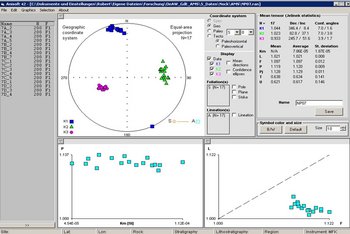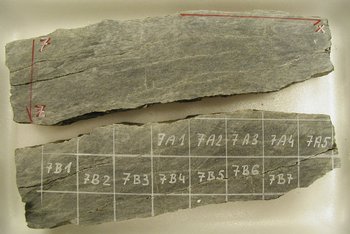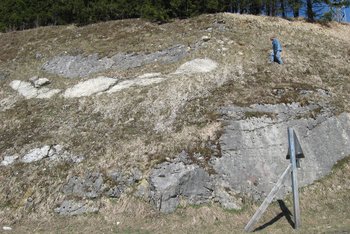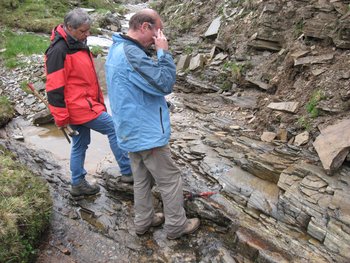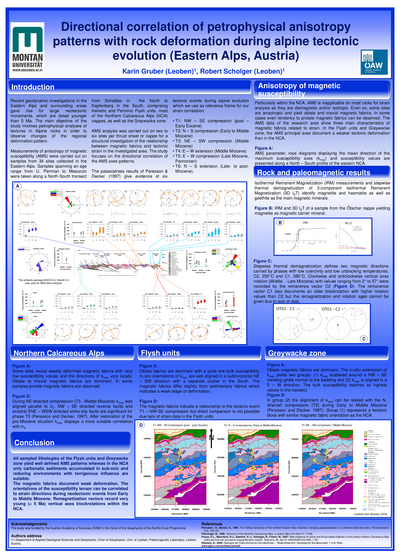Anisotropy of magnetic susceptibility
With the help of the anisotropy of magnetic susceptibility, structural analyses can be carried out on rocks even if they do not show any macroscopic structural characteristics. The magnetic texture of a rock is not only determined by the form and crystal structure of the magnetic grains, but also by the arrangement of magnetic domains within ferromagnetic grains. This kind of alignment is directly influenced by geological stress. We were able to prove a clear link between the magnetic structure of rock and the direction of movement along the fault in the area of fault zones. New developments in equipment enable the analysis of magnetic textures which could not be measured previously. These include the structures of virtually non-magnetic rocks (limestone, dolomite, marble) and the detection of minor structural anisotropies due to deformation.
Magnetic fabric and strain
In principle, strain manifests itself as an alteration in the shape of the susceptibility ellipsoid. The first indication of the deformation is the deviation of the magnetic lineation from the palaeo-flow direction in the direction of maximum elongation (e.g. perpendicular to the direction of compression). In addition, a reduction of the flatness of the structure occurs, the total anisotropy decreases.
Magnetic fabric analysis of weakly deformed rocks
ÖAW (GdE) Projekt (2008 - 2012)
Using new and improved petrophysical methods, this project aims to analyse the magnetic structures of rocks from the Molasse Zone, the Styrian Basin, the Vienna Basin and the Northern Calcareous Alps, which could not be measured with previous methods, and observe regional differences in the deformation pattern in the Eastern Alps.

Publications
Karin Gruber (2010): Anwendbarkeit magnetischer Gefügemessungen für die Analyse des Deformationszustands von Karbonatgesteinen – Am Beispiel der östlichen Nördlichen Kalkalpen, Österreich. Masterarbeit Montanuniversität Leoben 2010.
Master thesis Gruber 2010 (PDF)
Presentations
Presentations
Scholger, R. (2012): Improved texture analyses of weakly deformed rocks by means of thermal enhancement of magnetic fabrics. PANGEO Austria, Salzburg, 15.-20.09.2012 (abstract).
Gruber, C., Scholger, R., Fritz, H. & Kurz, W.: Strain and AMS data from the Stangalm Mesozoic: Do data record tectonic strain? PANGEO Austria, Salzburg, 15.-20.09.2012.
Gruber, K. & Scholger, R. (2010): Directional correlation of petrophysical anisotropy patterns with rock deformation during alpine tectonic evolution (Eastern Alps, Austria). PANGEO Austria, Leoben, 15.-19.09.2010. (abstract:) Journal of Alpine Geology, 52: 128-129.
Poster PANGEO Austria 2010 (PDF)
Gruber, K., Scholger, R. & Pueyo, E.L. (2010): Magnetic fabric study of rock deformation during alpine tectonic evolution on a cross section through the Eastern Alps (Austria). EGU General Assembly 2010, Wien.
(abstract:) Geophysical Research Abstracts, Vol. 12, 9522
